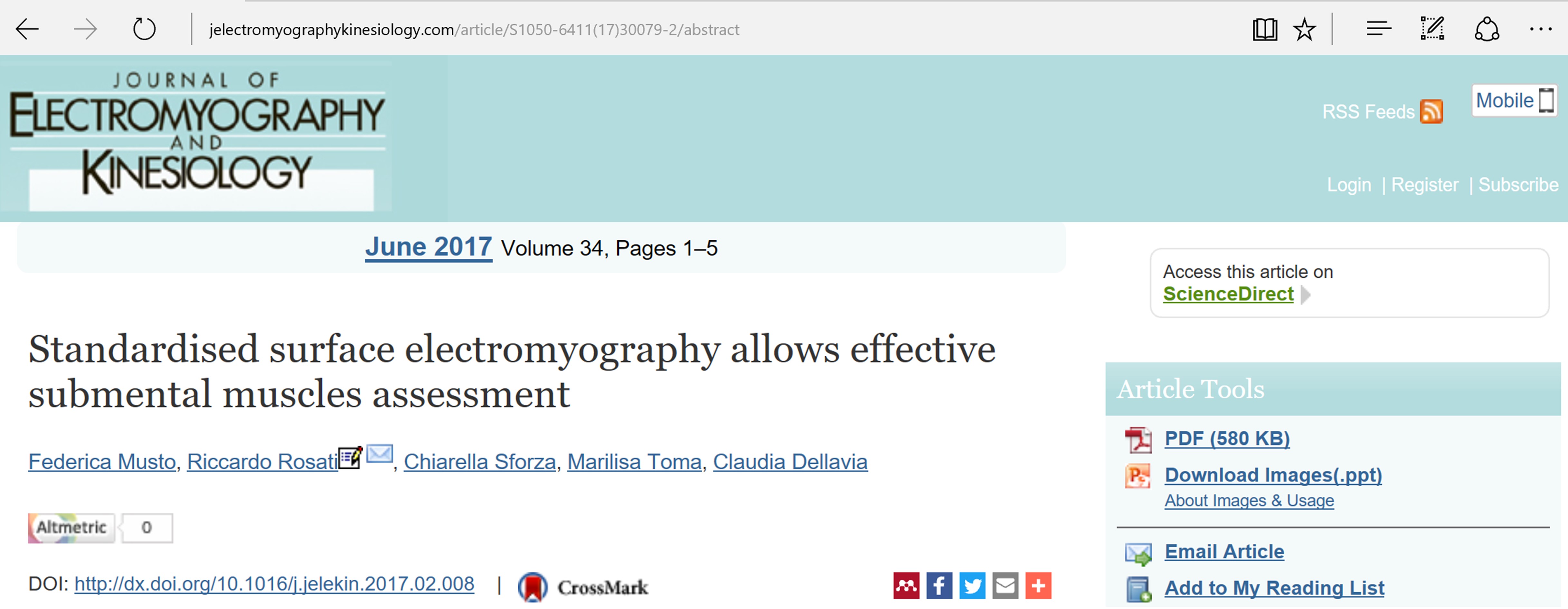Standardised surface electromyography allows effective submental muscles assessment
The aims of this pilot study were to evaluate: (i) the reproducibility and variability of an electromyographical protocol developed for the assessment of submental muscles (SM) (ii) to apply the new protocol to maximal teeth clenching, a simple and largely studied static task in order to quantify the relative contribution of submental muscles. In 20 healthy subjects, aged 19–35 years, surface electromyography of SM, masseter (MM) and anterior temporalis (TA) muscles was performed during maximal voluntary clenching (MVC) with and without cotton rolls and the pushing of the tongue against the palate. Clenching on cotton rolls and pushing the tongue against the palate were used to standardise respectively MM and TA, and SM muscular potentials. The exercises were repeated in two appointments (T1–T2); submental muscles standardisation was also repeated twice (A-B) in each session to assess repeatability. Symmetry and activity were calculated for each couple of muscles. A two-way analysis of variance was computed for SM: no Factor 1 (T1 vs T2) or Factor 2 (A vs B) or F1 × F2 significant effects were found. SM recruitment was 31% of the maximal activity, with symmetry values larger than 80%. In conclusion, standardised electromyography allows a reliable assessment of Submental muscles activity.

